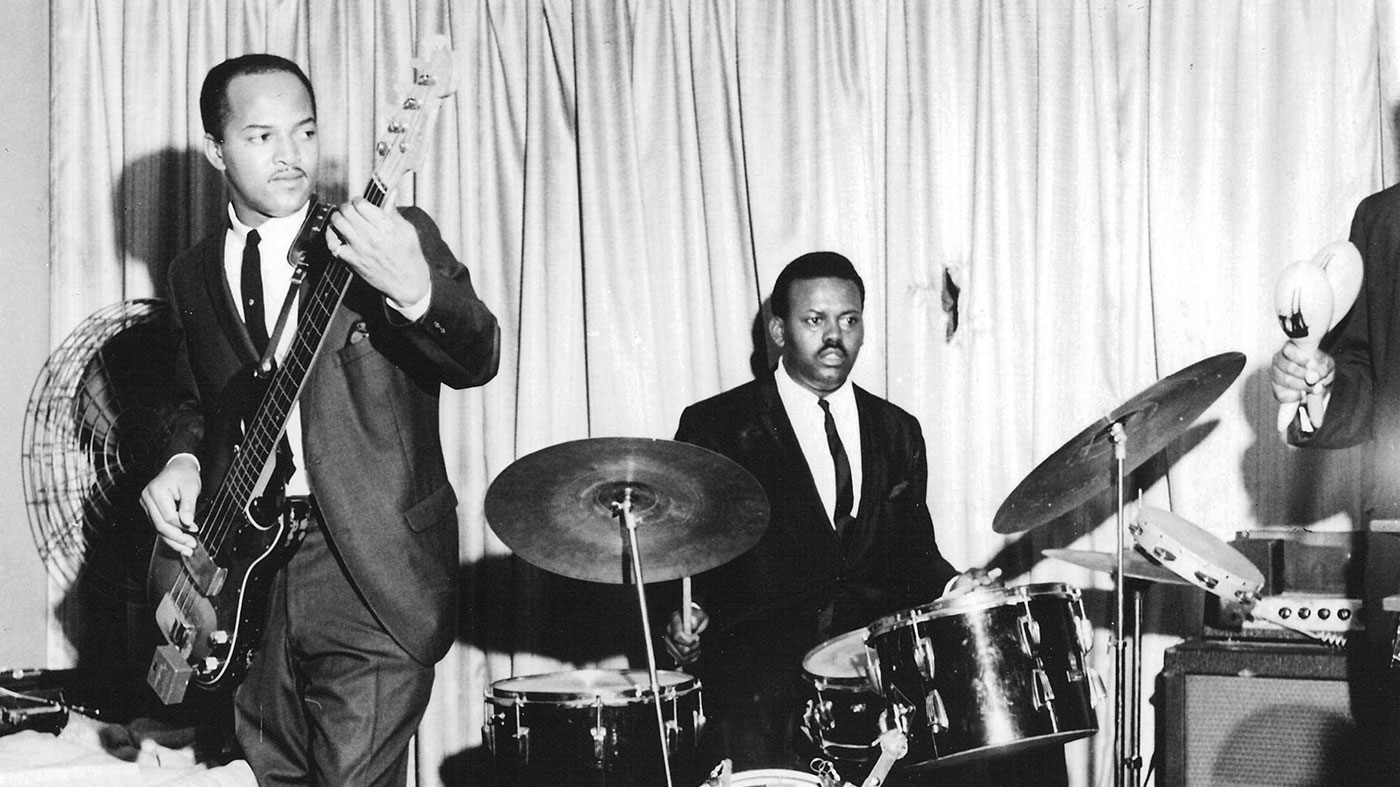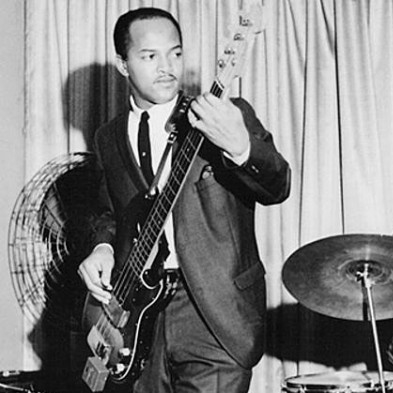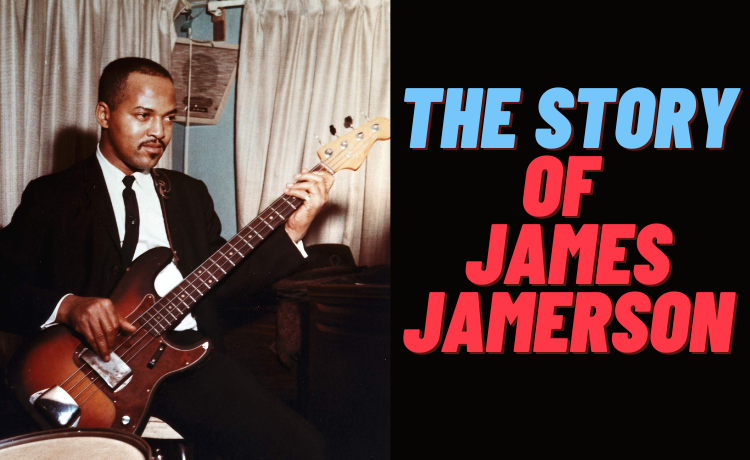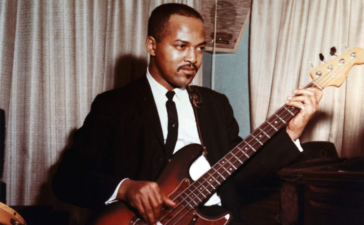The Story of James Jamerson! it’s amazing, he was arguably the first ‘virtuous’ bass player. He was one of the bassists who gave the electric bass a voice of its own, a voice separate from the bass guitar that it gradually replaces in popular music. Jamerson was able to create different and interesting bass lines that were as recognizable in the songs he recorded as any other instrument.

As one of The Funk Brothers, he was the uncredited bassist on most of Motown Records’ hits from the late 1950s, through the golden age of the label in the 1960s and early 1970s. The Funk Brothers were jazz musicians who they had been recruited by Motown boss Berry Gordy, who for many years maintained a typically full schedule of daytime recordings in Motown’s tiny garage “Studio A”, nicknamed ‘The Snakepit’.
The beginning of everything
Born on January 29, 1936 near Charleston, South Carolina, Jamerson made his fateful move to Detroit with his mother when he was 18 years old in 1954.
His grandmother played the piano a little, and his aunt sang in the local church choir. He played the trombone when he was in elementary school and also visited his cousin’s house to practice piano, which he was soon able to play in church. His love for music grew as he got older, and he became an avid listener of pop, jazz, gospel, and R&B songs played on local radio stations. When his mother moved the family to Detroit in 1954, James enrolled at Northwestern High School. With a desire to play music, James decided to join the school’s jazz band and chose to play double bass. He quickly mastered it, and the following year was able to play jazz bass lines in the style of Ray Brown and Paul Chambers.
When he graduated from high school, he started playing on ‘Washboard Willie and the Supersuds of Rhythm’. This band played regularly in Detroit, and James Jamerson’s playing developed quickly. In 1958, local singer and record label owner Johnnie Mae Matthews saw Jamerson playing with Washboard Willie and signed him to play sessions for his new label Northern Records. This quickly established his reputation as a studio musician, and other local studios began hiring him for their sessions. Around this time, Jamerson also played in Jackie Wilson’s backing band, whose smash hit ‘Reet Petite’ had been written by Berry Gordy…
When Berry Gordy opened his Hitsville USA studio in 1959, Jamerson became an accessory.
He and his fellow musicians referred to themselves as the Funk Brothers, although if they were credited in those days, it was like the Soul Brothers). James and his companions practically lived in Studio A, the space they called the Snakepit. Alongside Benny Benjamin, Earl Van Dyke, Richard “Pistol” Allen, Joe Hunter, Paul Riser, Robert White and many others, he helped to weave the very fabric of Tamla Motown’s commanding and infectious sound.
From vertical to precision
The first Motown track he recorded using Fender Precision is believed to be Strange I Know by The Marvelettes. I, looks like this first Fender was stolen so he bought a Sunburst ’62 Precision and like all standard Fenders of the time it came equipped with a pair of cover plates, a lanyard mute (rubber strap attached under the top surface of bridge cover) and flatwound strings.

This combination of flatwounds and a damper meant that any natural sustain from the strings was entirely removed, so along with the short, fat notes he played using his right index finger (dubbed the hook), he began to produce the sound we all love. As for the overall tone, he relied on the instrument’s natural sound, as the Precision’s tone and volume knobs were always rolled up.
James has always used heavy gauge La Bella strings (the older the better), so it’s not surprising that the bass developed quite a horrible action to a point where many found it impractical, but Jamerson didn’t care (probably thanks to his years playing upright bass) and considered improved tone.
He was a tight but expansive player, and his P-bass was soon called the funk machine. This was the bass he always used to record with, however he also owned a Fender Bass V – this is a curious beast with a high C added as the fifth string – but whether he ever recorded with it or not is unclear. .
For sessions he always called straight to the desk, but for club work he preferred an Ampeg B-15 Portaflex, or when he went on a Motown tour he used a Kustom 200 with a 2 x 15 inch cabinet to handle. with the larger locations. . This was actually quite an ugly thing, as both the head and the cabinet were covered in blue Naugahyde, an artificial leather used primarily in automobiles.
Jamerson has always been highly respected as a musician, although the salaries that session musicians received at that time certainly did not represent the essential role they played.
Throughout the 1960s, Jamerson would add his authoritative, funky bass lines to the vast majority of the company’s ever-expanding catalogue. This was the time when musicians who played on recording dates were almost never credited on the cover, and while he played on many other hits after leaving Motown in the early 1970s, he largely passed away in obscurity.
Jamerson’s relationship with Motown officially ended in 1973, a year after Berry Gordy moved the company to Los Angeles, and although Jamerson was one of the few Motown staff to head west of Detroit, he wasn’t comfortable with the company. new configuration. He went on to perform on 1970s hits such as “Rock the Boat” (Hues Corporation), “Boogie Fever” (The Sylvers) and “You Don’t Have To Be A Star (To Be In My Show)” (Marilyn McCoo and Billy Davis Jr.) and also played on Robert Palmer’s 1975 solo album “Pressure Drop”. But as other musicians switched to high-tech amplifiers and simpler, more repetitive bass lines, Jamerson’s style fell out of favor among producers. In the 1980s, he failed to get any serious gigs working as a session musician.
Long troubled by alcoholism, Jamerson died of complications from cirrhosis of the liver, heart failure and pneumonia in Los Angeles. He was 47 years old and was said to be bankrupt and bitter over his lack of recognition at the time of his death.

Jamerson’s personality emerged as a mercurial in the memories of the musicians featured in Standing in the Shadows of Motown; the Funk Brothers, in the words of Elvis Mitchell of the New York Times, “had to deal with the whims of a genius as cunning and autocratic as Fidel Castro and far more unpredictable.” The film’s narrator refers to Jamerson as tortured, and alcohol abuse caused him to start missing recording dates in the late 1960s. Even after a decade of chart-topping activity, Jamerson was virtually unknown to the public in general; Motown was a star-oriented organization that made little mention of the diverse talents that combined to make it a success. Bassists and other instrumentalists, however, were quick to cite Jamerson as an influence; Beatle Paul McCartney, in a low interview quoted on the Rock and Roll Hall of Fame website, said that during his early years he “started listening to other players – mostly Motown. As time went on, James Jamerson became my hero.. . because he was so good and melodic.”
Jamerson was described by Motown Records founder Berry Gordy as “a genius on bass… an amazing improviser in the studio and someone I’ve always wanted in my sessions”. James is now considered one of the most influential bassists in the history of modern music. He was inducted into the Rock and Roll Hall of Fame in 2000.










42 Comments